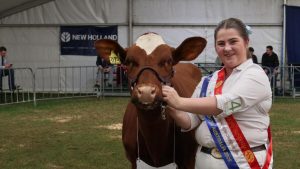
David and Cheryl Vonhoff, who bought their farm at Brymaroo near Oakey more than two decades ago and planted the trees with the help of Landcare programs, are seeing an increase in milk production.
“The shade for the cows is probably worth $56,000 a year to us in cow comfort,” Mr Vonhoff said.
“We worked out the other day that it was $1.40 per day per cow extra over 200 cows over 200 days.”
The family farms 600ha, milking about 200 cows which produce more than one million litres of milk a year.
When they bought the property, the land was bare and there were only about 100 native trees left – a mix of mountain coolibah, grey box, river red gum and brigalow.
“It was just one big paddock and it was bare, overgrazed and flogged out. We had a two inch storm not long after we bought it and the water that skated off the hill was just unreal,” Mr Vonhoff said.
“The water table just built up [on the flat] and it just turned into a swamp. The minute amounts of salt that was in that water stayed behind [with evaporation].”
After seeing the damage, they got to work, planting trees like Chinchilla white gum and tipuana, and grasses and legumes like buffel grass and leucaena.
They’ve since added lucerne, oats, vetch and multi species pasture across cultivation and rotational strip paddocks, which are assisted by dams and bores.
“Now, there’d be bugger all water running off here. It doesn’t matter how heavy the rain is, because all this stuff is holding that water back,” Mr Vonhoff said.

“If you can hold the water back, you’ve got that potential for that water to grow grass, and if you’ve got grass growing, you’ve got the potential to slow water down, so it’s just a compounding thing.”
The cattle feed from a trough in the night, then they go on to lab lab, get pushed through to grass lucerne strips, go on to water and sudangrass, back onto the lucerne strips, then home for water. Then at about 1pm they get access to the tipuana trees before milking time.
Cattle also graze on the tree leaves when they can reach them.
“When the cows come in here, it doesn’t matter how luscious the grass is, they will pick all these leaves,” he said.
“If you’re desperate, you can lop [the out of reach leaves] off. Quite often I do some pruning around the place and throw that on the back of the four wheeler and take them up to the poddy calves – the poddys just love eating these leaves.
“I also utilise the Chinchilla white gum – the poddys just love eating the leaves off them. I get into trouble for doing it. Some seem to think I’m trying to turn the calves into koalas, but that doesn’t worry me.”
In addition to cow comfort, Mr Vonhoff is also seeing the environmental benefits from the wide-scale tree planting.
“It gives me a great thrill… it doesn’t matter where you pull up, you hear birds talking, and that’s got to be a benefit for insect control and all the rest of it,” he said.
“I’ve been very much involved in land care, even before Landcare started, and I was always passionate about doing a lot of different things and going to a lot of different field days and presentations with regards to better land management.
“With Landcare there was a lot of opportunity, a lot of funding and a lot of help available. And if that was available, I was quite happy to take it up and take advantage of it, and the tree planting was a big part of that.
“Taking the trees away is what stuffed up the environment and caused that salinity down on the flat.
“That area down there is really highly productive land now. We cut hay off it and the milking cows graze on it quite often, where once it was just bare, salt affected land.”
The Vonhoffs are now planning to plant more tipuana trees and leucaena.
























